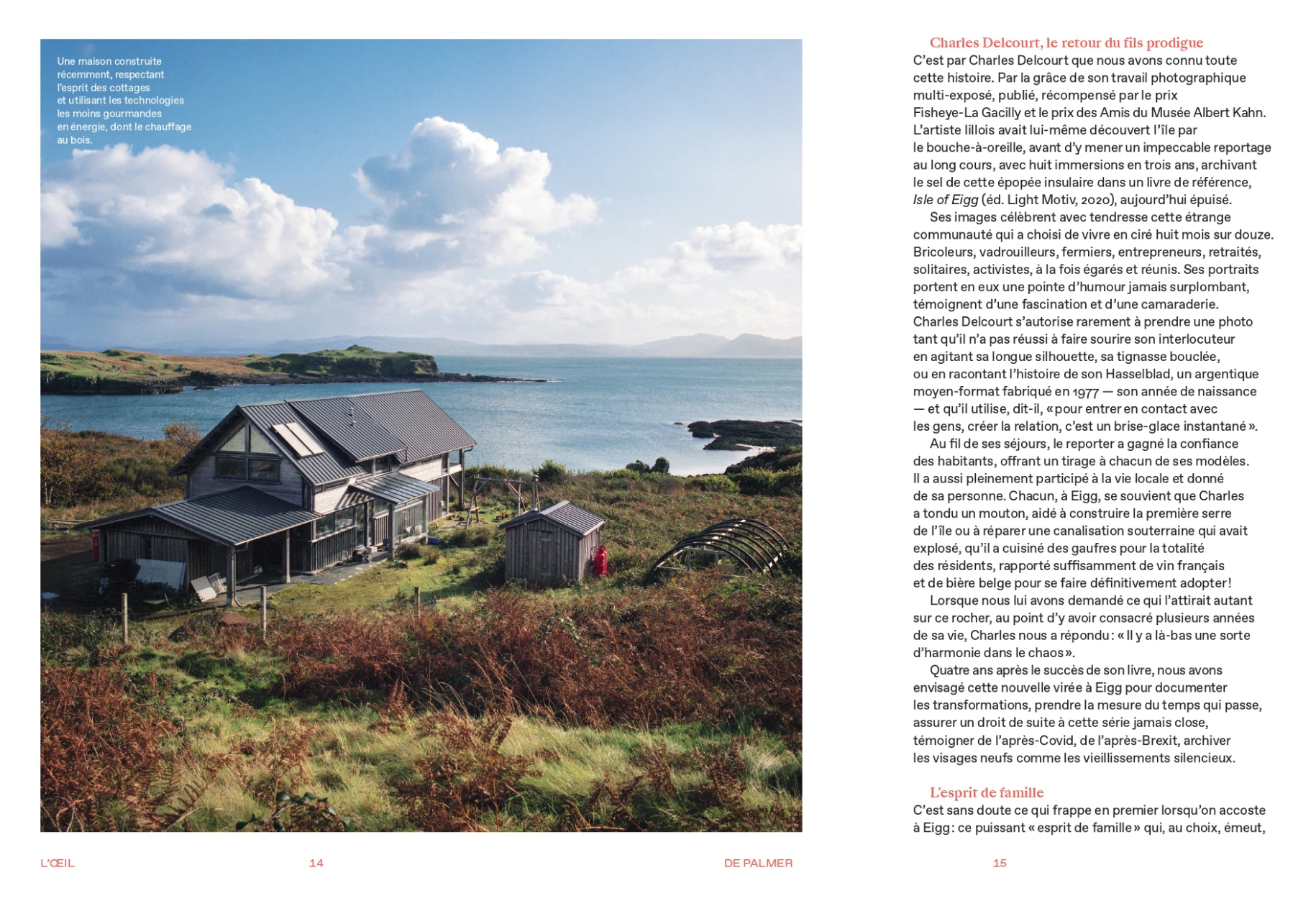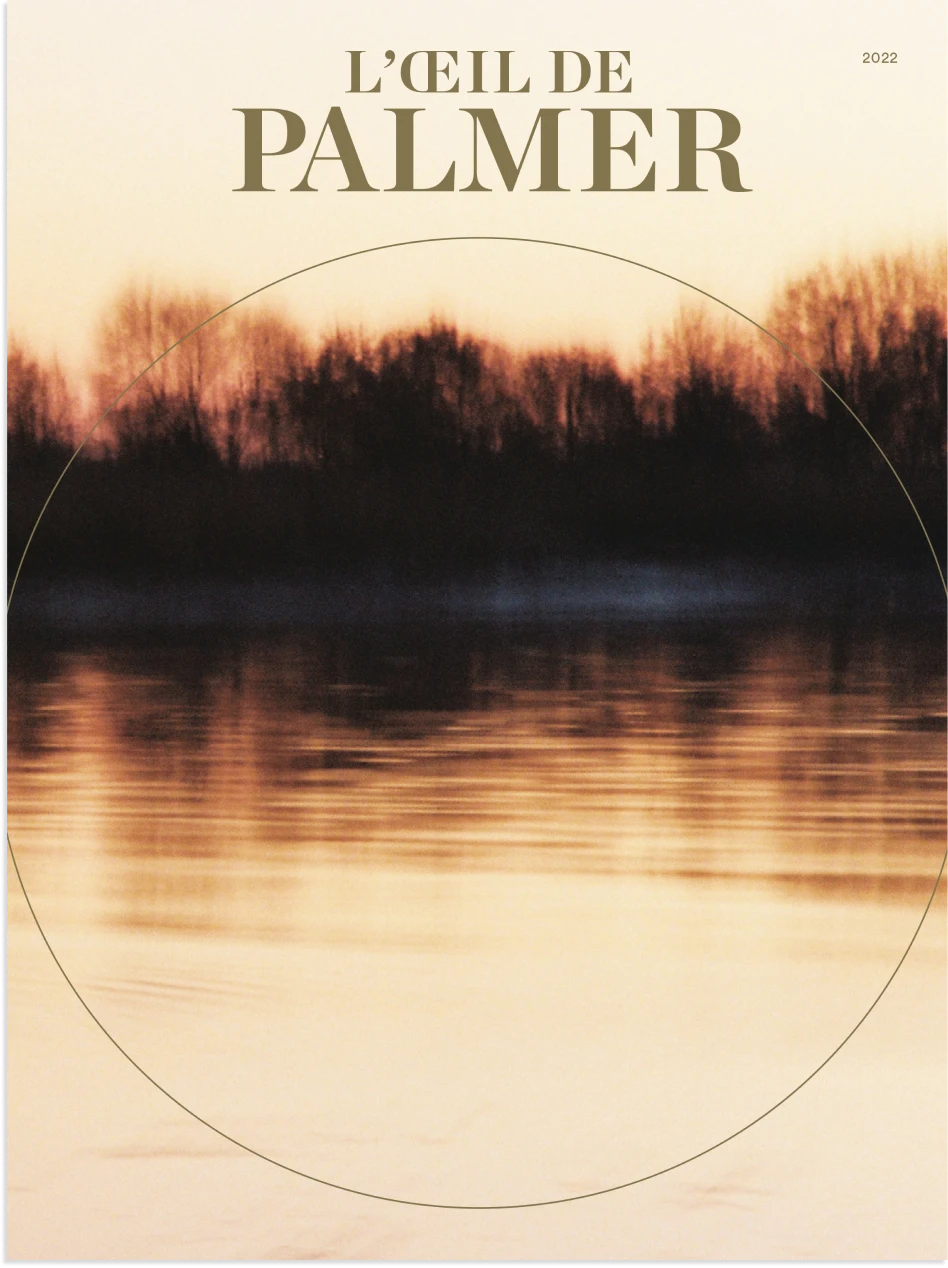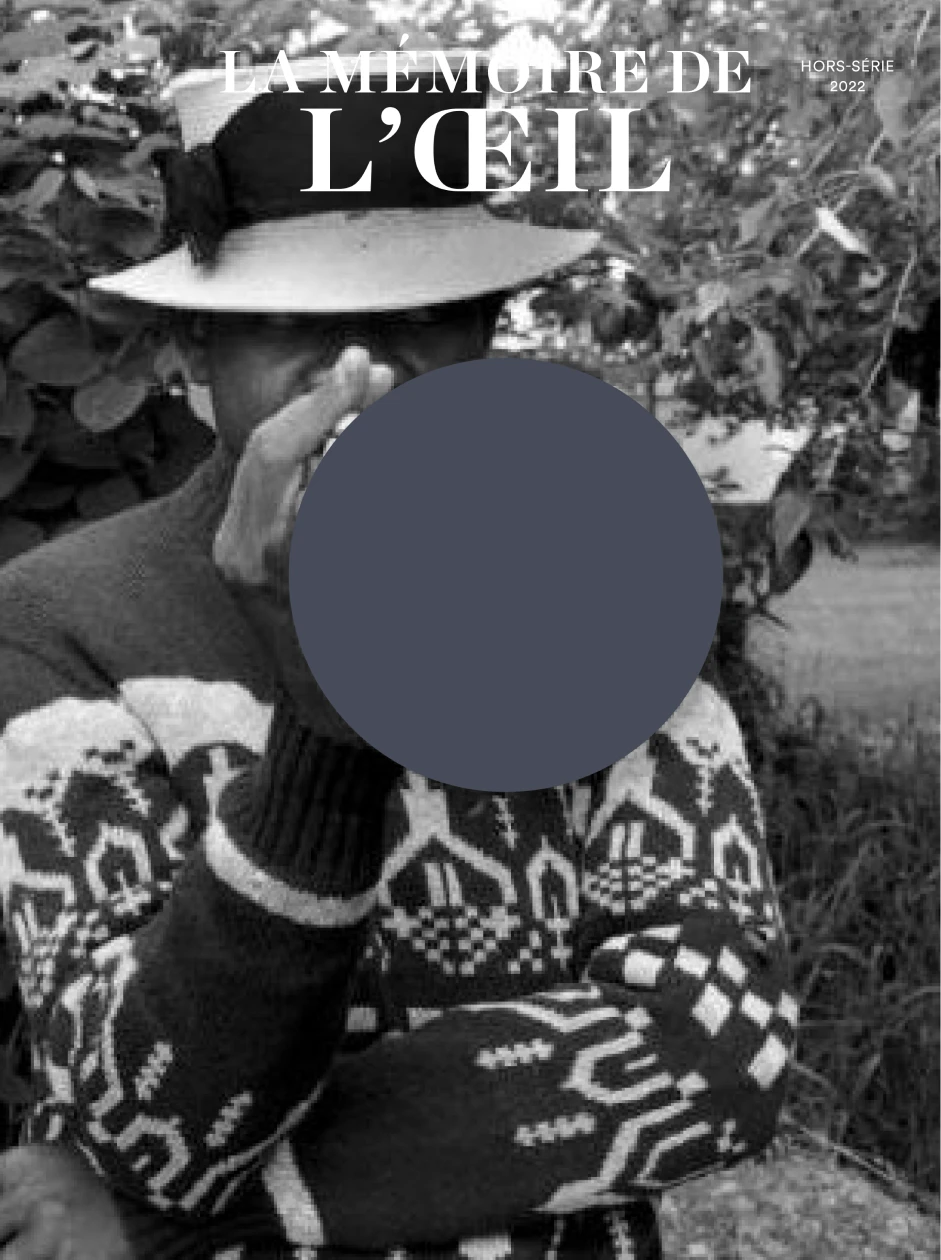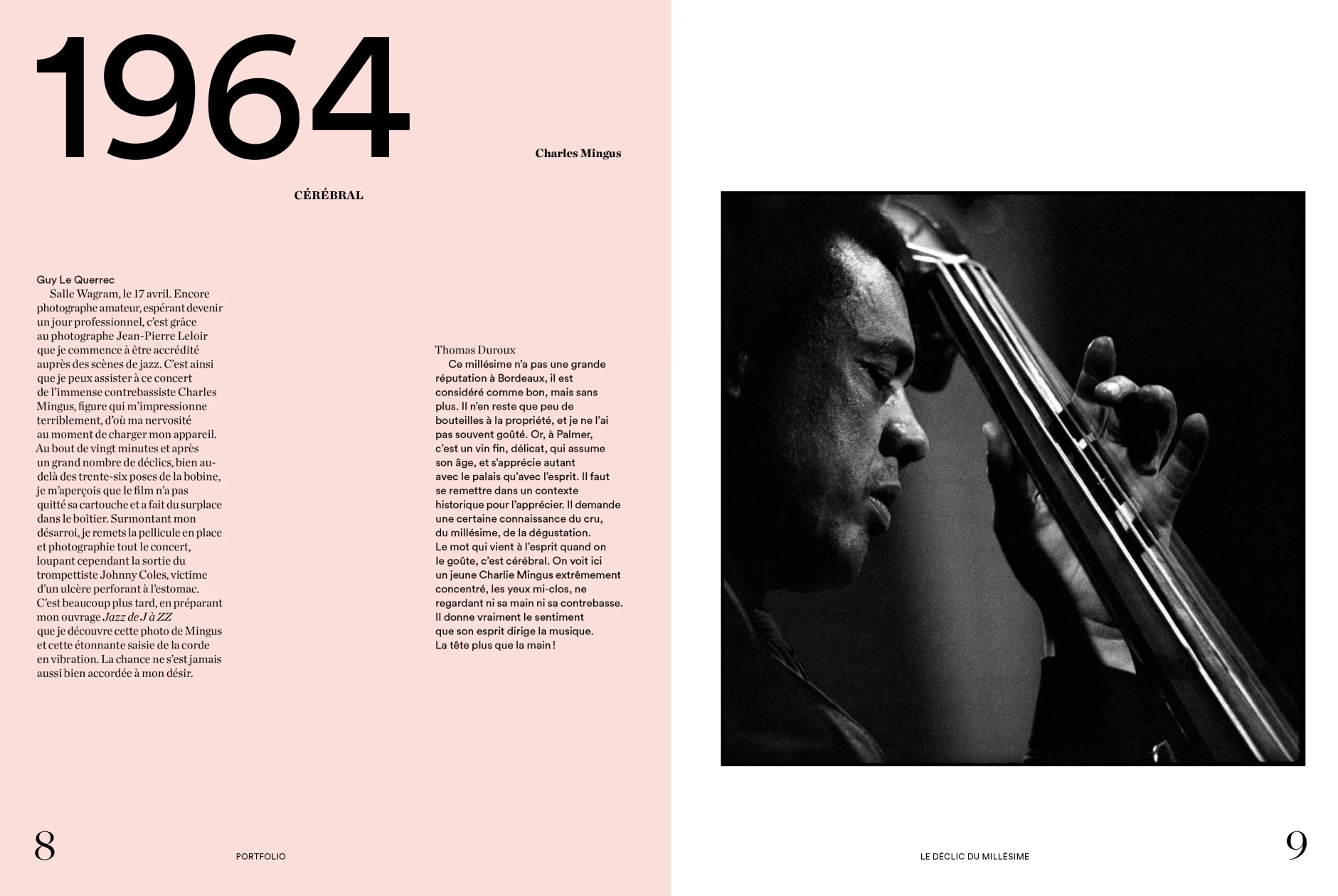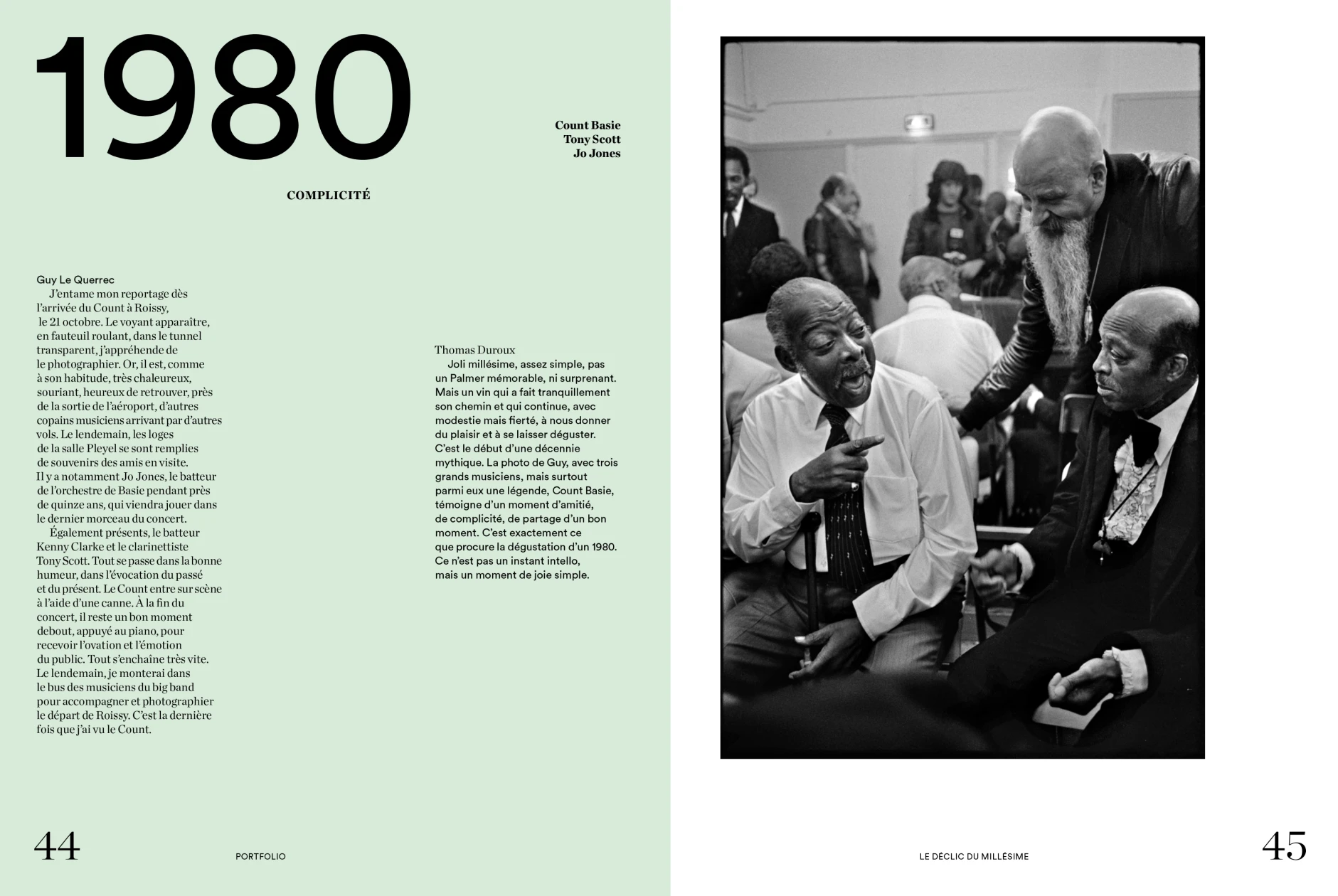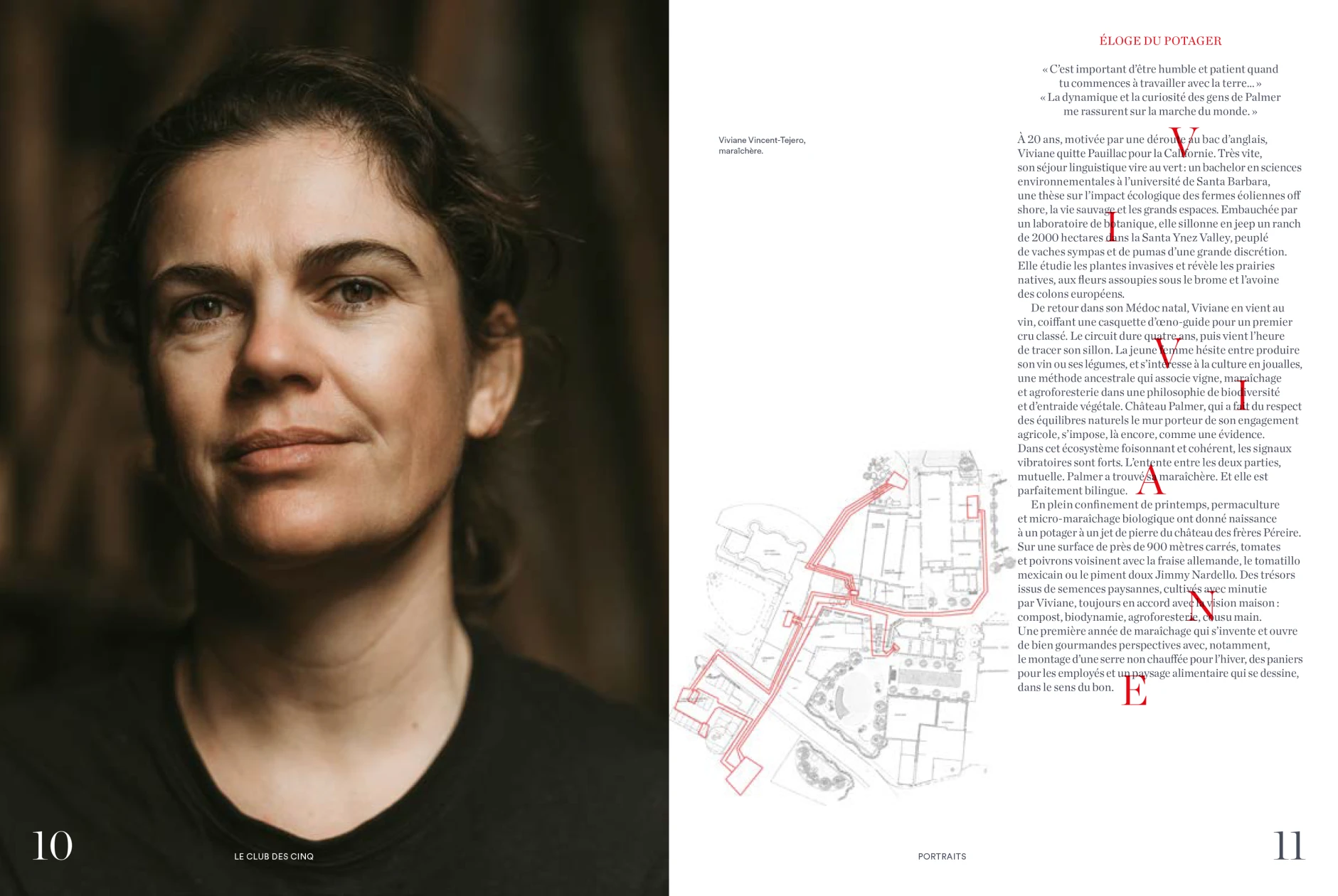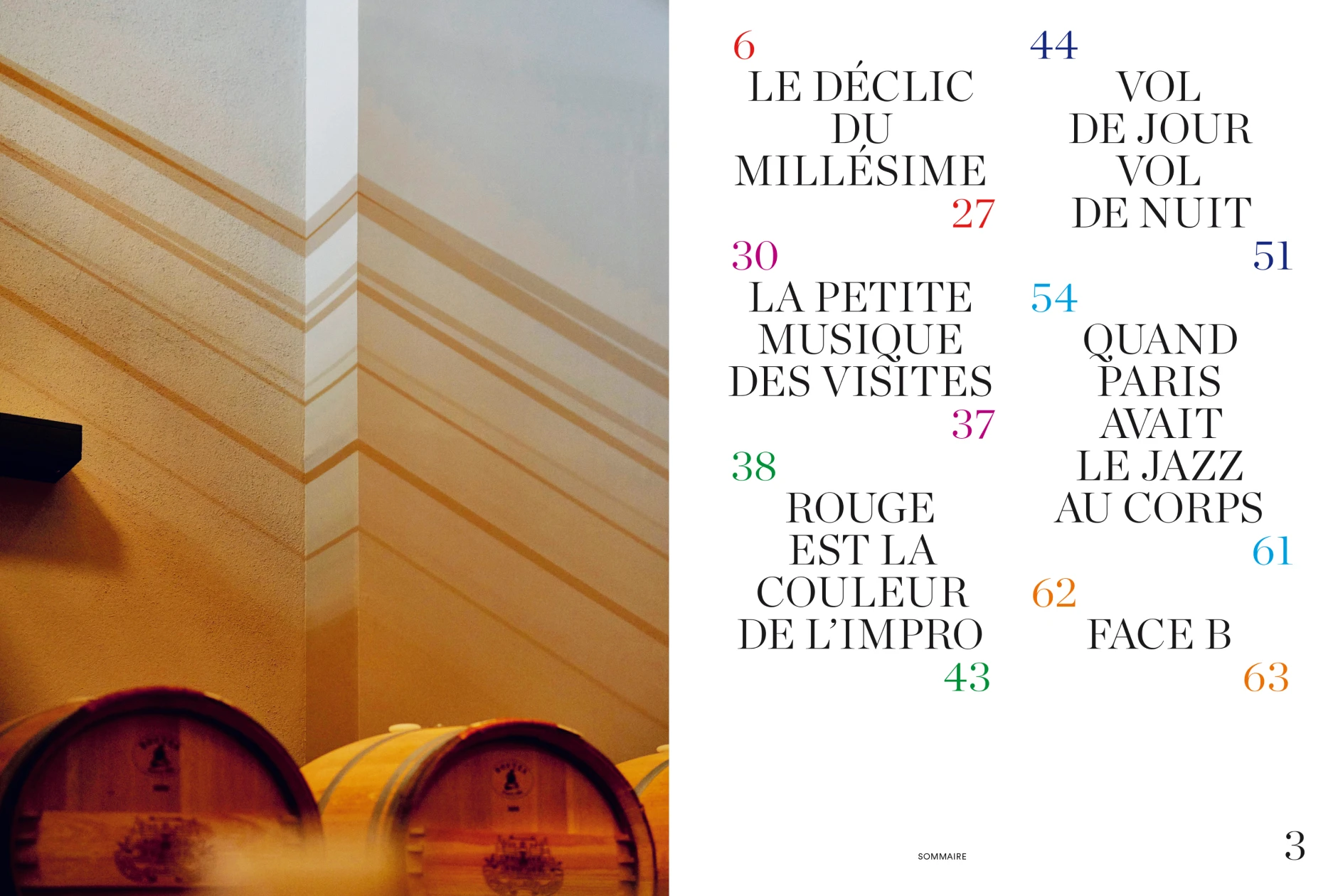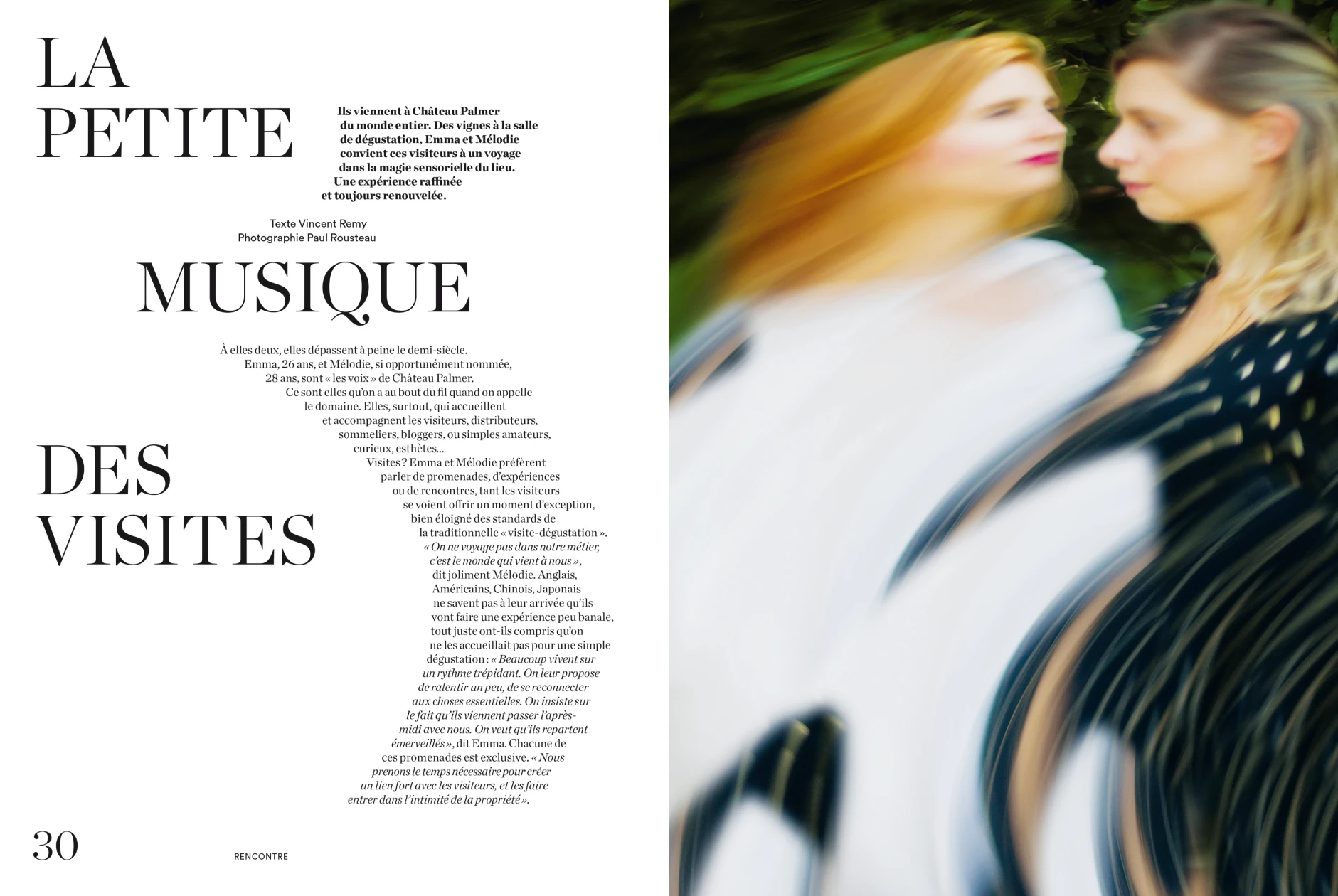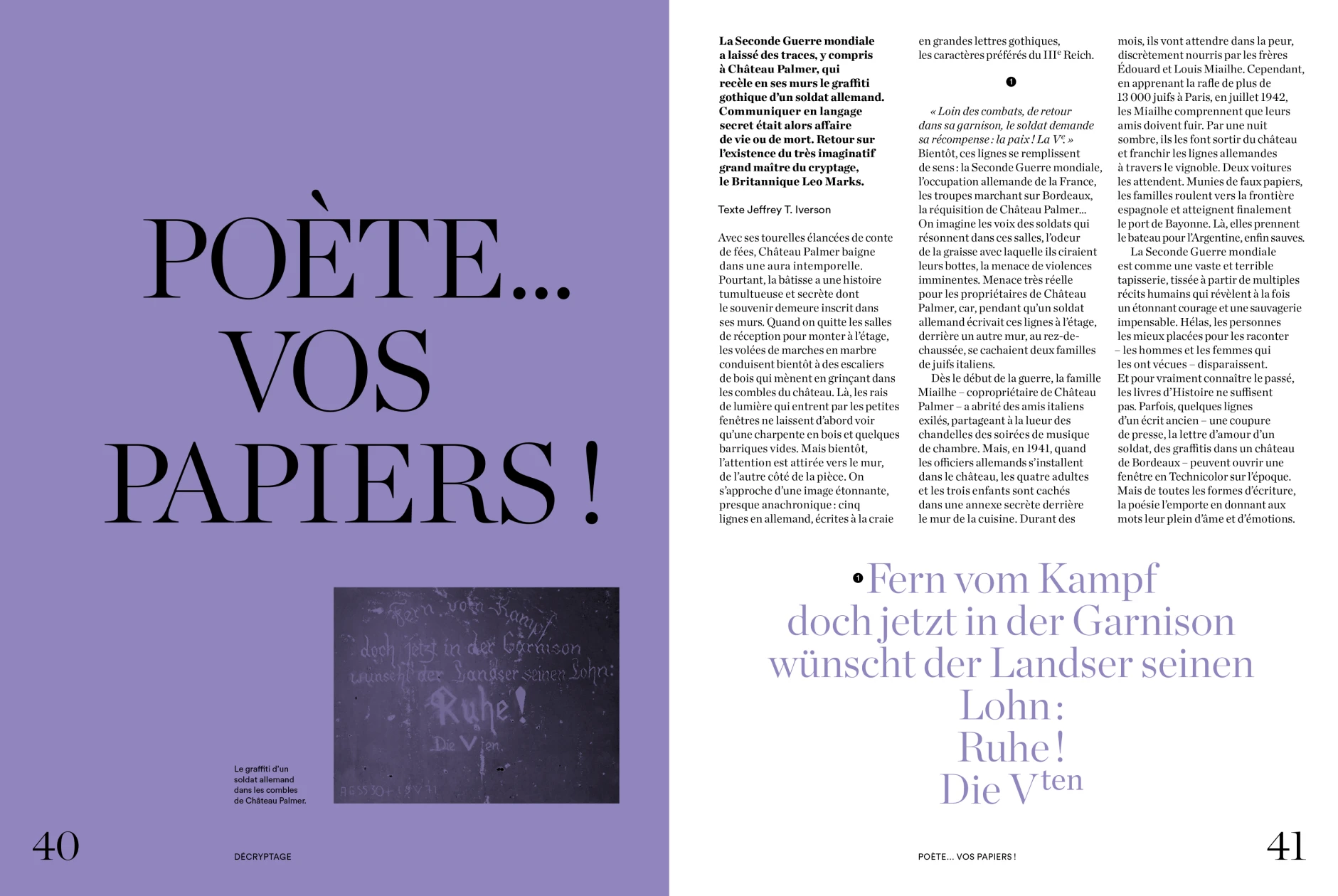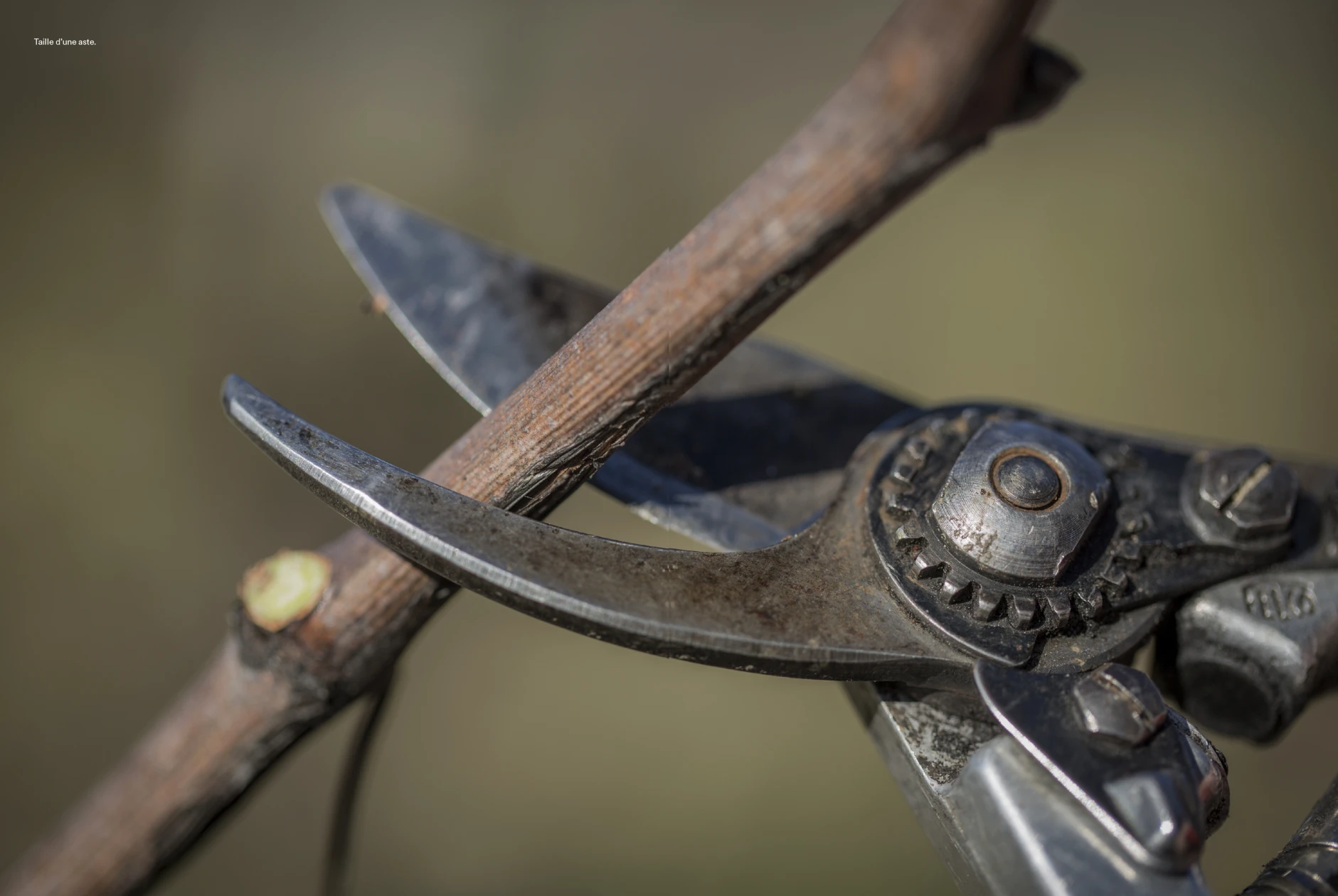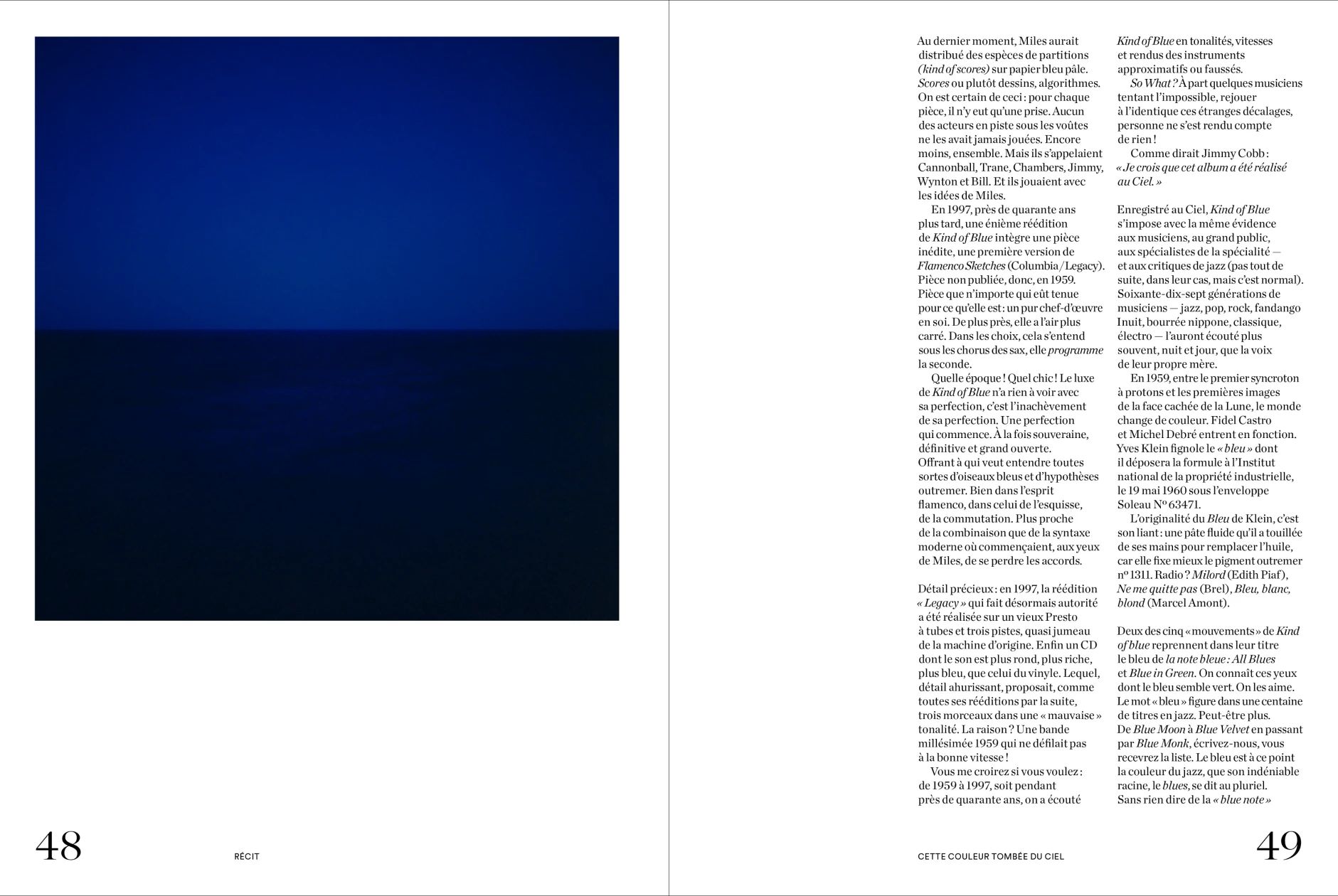
L’ŒIL DE PALMER, A BIENNIAL ART MAGAZINE WITH DEEP ROOTS

The 2025 edition of L’Œil de Palmer takes a closer look at insularity and its promises. Nothing could be more natural for a publication crafted on the Médoc peninsula, in the heart of a farm transformed into a laboratory for economic circularity and increasing self-sufficiency. Here, our teams work in islands, ever attentive to the cycle of the seasons and of physical matter, an eye kept constantly on the turning winds.
To Become An Island takes a closer look at insularity and its promises. Nothing could be more natural for a publication crafted on the Médoc peninsula, in the heart of a farm transformed into a laboratory for economic circularity and increasing self-sufficiency. Here, our teams work in islands, ever attentive to the cycle of the seasons and of physical matter, an eye kept constantly on the turning winds.
It is often said that islands are the canaries in the coal mines of climate change, outposts serving as both sentinels and test-sites. But islands are moving, ambivalent, both apart from the world and at its center, idyllic and dangerous, picture-postcard fantasies and philosophical challenges. They sometimes offer new avenues of exploration, from the scientific to the personal, offering a moment of fertile withdrawal from which a form of utopia may spring. Whether the art-islands of Japan, renewable energy pioneers in Scotland, dark sky sanctuaries, or symbols, each of us must invent our own islands, guide their transformation, and resist uniformization by creating our own spaces – both singular and collective, independent and open to the world.
- Eigg, Electric Ladyland — By Erwan Desplanques. Photographs by Charles Delcourt
- “Islands are coveted because they enable us to conquer the ocean” — Interview with geographer Marie Redon. Images by Jean-Michel Pancin
- “Nature is a mirror that feeds all the senses” — Text and photographs by Paul Cupido
- A Beacon in the Night — By Erwan Desplanques. Photographs by SMITH
- Tabula Rasa — Portfolio of Julien Mignot
- Robinson’s Dream — By Thomas Vinau
- A wind blowing from the past… — By Chantal Detcherry. Photographs by Marine Lécuyer
- The Grapes of Aeolus Rise from the Ashes — By Simonetta Lorigliola. Photographs by Chiara Indelicato
- Cycling to the Water Lilies of Japan — By Emmanuel Ruben. Illustrations by Loran Stosskopf
This magazine, with a limited print run of 500 copies, is available on request and subject to availability by writing to communication@chateau-palmer.com

Charles Delcourt — Photography

Charles Delcourt — Photography

Charles Delcourt — Photography
ALL OUR EDITIONS

To become an Island
To Become An Island takes a closer look at insularity and its promises. Nothing could be more natural for a publication crafted on the Médoc peninsula, in the heart of a farm transformed into a laboratory for economic circularity and increasing self-sufficiency. Here, our teams work in islands, ever attentive to the cycle of the seasons and of physical matter, an eye kept constantly on the turning winds.
It is often said that islands are the canaries in the coal mines of climate change, outposts serving as both sentinels and test-sites. But islands are moving, ambivalent, both apart from the world and at its center, idyllic and dangerous, picture-postcard fantasies and philosophical challenges. They sometimes offer new avenues of exploration, from the scientific to the personal, offering a moment of fertile withdrawal from which a form of utopia may spring. Whether the art-islands of Japan, renewable energy pioneers in Scotland, dark sky sanctuaries, or symbols, each of us must invent our own islands, guide their transformation, and resist uniformization by creating our own spaces – both singular and collective, independent and open to the world.
- Eigg, Electric Ladyland — By Erwan Desplanques. Photographs by Charles Delcourt
- “Islands are coveted because they enable us to conquer the ocean” — Interview with geographer Marie Redon. Images by Jean-Michel Pancin
- “Nature is a mirror that feeds all the senses” — Text and photographs by Paul Cupido
- A Beacon in the Night — By Erwan Desplanques. Photographs by SMITH
- Tabula Rasa — Portfolio of Julien Mignot
- Robinson’s Dream — By Thomas Vinau
- A wind blowing from the past… — By Chantal Detcherry. Photographs by Marine Lécuyer
- The Grapes of Aeolus Rise from the Ashes — By Simonetta Lorigliola. Photographs by Chiara Indelicato
- Cycling to the Water Lilies of Japan — By Emmanuel Ruben. Illustrations by Loran Stosskopf
This magazine, with a limited print run of 500 copies, is available on request and subject to availability by writing to communication@chateau-palmer.com

Charles Delcourt — Photography

Charles Delcourt — Photography

Charles Delcourt — Photography

Infinity
A land of conquest on the Atlantic Ocean, ennobled by the gravel and silt that rivers brought here from afar, the story of the Médoc is one of perpetual renewal. Less-than-auspicious geological and climatic conditions were overcome by the ingenuity of Flemish engineers and their dykes and by the talent of the first winegrowers, who transformed poor, stony soils into the kingdom of vitis vinifera. From the labour of these men and women was born a fragile prosperity, ever-shifting like the borders of the peninsula, and the life there that continually fades away, only to be reborn. Our profession embraces the rhythm of the seasons. Our endeavour is to shape an infinite organic matter, changing it in form alone, from vines to leaves, from grapes to wine...
Without matter there is no spirit, and artists know this well. We are reminded of this by the work of the photographer and sculptor François Méchain, who stepped into his garden one day and started collecting leaves, branches and dead wood, and from these vegetal fragments began to create geometric shapes that would enchant the world. He went on to immerse himself in the infinity of Canada's boreal forest, and later in the verdant commune of Chaumont-sur-Loire, where he imagined a “Tree of Ladders” that invited visitors to reach for the sky. Not far from there, the Château de Chambord – a castle born of the will of a king, Francis I – appears to spring from the earth, like an edifice formed of spiritual matter. At its heart, the double-helix staircase imagined by Leonardo da Vinci, a mind fascinated by perpetual motion, rises towards the heavens.
How does one express the infinitely complex sensation we feel when our lips meet a great wine? Until the nineteenth century, there were only 200 words to describe a wine; today there are ten times that number! But this surplus of verbiage has its own limits. As the novelist Jean-Paul Kauffmann reminds us, in describing the mythical 1961 Palmer, Robert Parker found himself unable to communicate the reasons for his enthusiasm, confessing, "The bouquet is difficult to capture in words." Though born of a quest for perfection, wine belongs to the finite universe. And if it is destined to disappear, so much the better, argues Jean-Paul Kauffmann – for then the life of its memory can begin.
- Castle in the Sky — Photographs by Charlotte Jolly De Rosnay
- Force of Nature — Photographs by François Méchain
- “I remember…” — Photographs by Olivier Metzger
- On the Nose? — Photographs by Loran Stosskopf
- In the Beginning was the Sea — Photographs by Valentin Abad
This issue is no longer available.

Benjamin Juhel— Photographie

François Méchain — Photographie
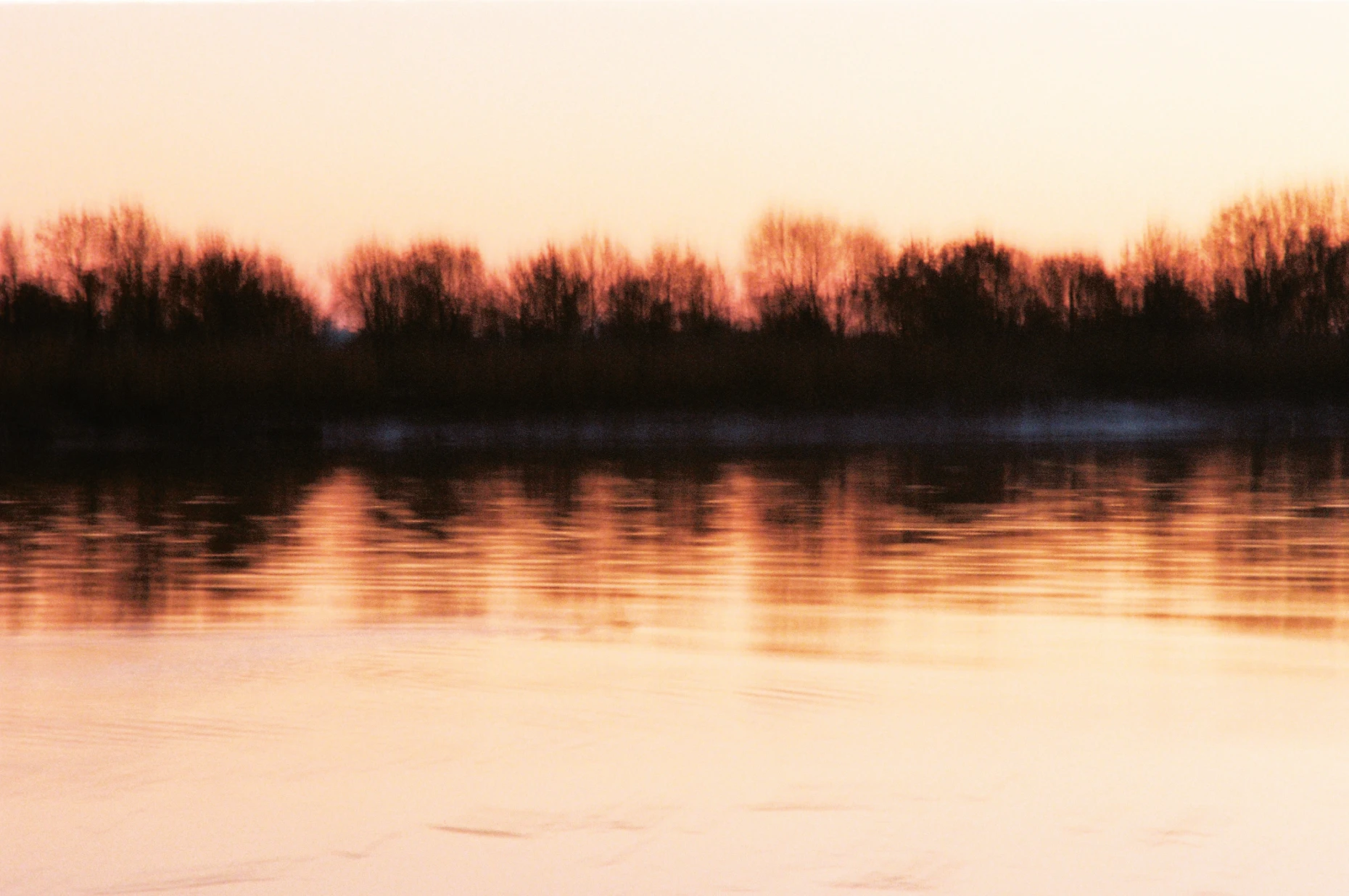
Valentin Abad— Photographie

A vintage Image, Special issue
The first sip of wine, like the first note of a jazz piece, is always the beginning of a journey. “Don’t play loud, play far,” said drummer Aldo Romano in his autobiography, perfectly expressing this experience of exploration. Twenty-five years ago, Aldo Romano embarked on a major African tour with bassist Henri Texier and clarinettist Louis Sclavis, which culminated with the magnificent, mythical album, Carnet de routes. It featured eighty photographs by Guy Le Querrec, nicknamed “the griot of the trio”. So it was that I discovered the encyclopaedic photographic oeuvre of Guy, whose lens has literally traversed the history of jazz and the lives of its greatest musicians.
Thus, in 2011, when we brought together jazzmen Michel Portal and Yaron Herman for the second season of Hear Palmer, it was Guy Le Querrec whom I invited to immortalise their encounter. But how did we come up with this idea of associating a wine with a photo? Who was behind it? I don’t remember, but there was this extraordinary moment when Guy and I, while tasting Palmer wines and looking at his photos, began finding connections and drawing analogies between the character of a vintage, its expression, and what transpired in the image – the personality of the musician, the style of his music, the expression on a face, a gesture, a very particular moment, an atmosphere...
In our little world of wine, we too often speak in this unequivocal, monotonous way of how vintages come one after another and yet do not resemble each other. Guy Le Querrec inspired me to truly explore this idea, not only through his photos, but also in his loquaciousness and his writing – he is a man with an extraordinary memory, and a storyteller that one could listen to for hours.
— Thomas Duroux
Special edition of L’Œil de Palmer pairing 50 vintages of Château Palmer with 50 photographs by Guy Le Querrec, from 1961 to 2011.
This issue is no longer available.
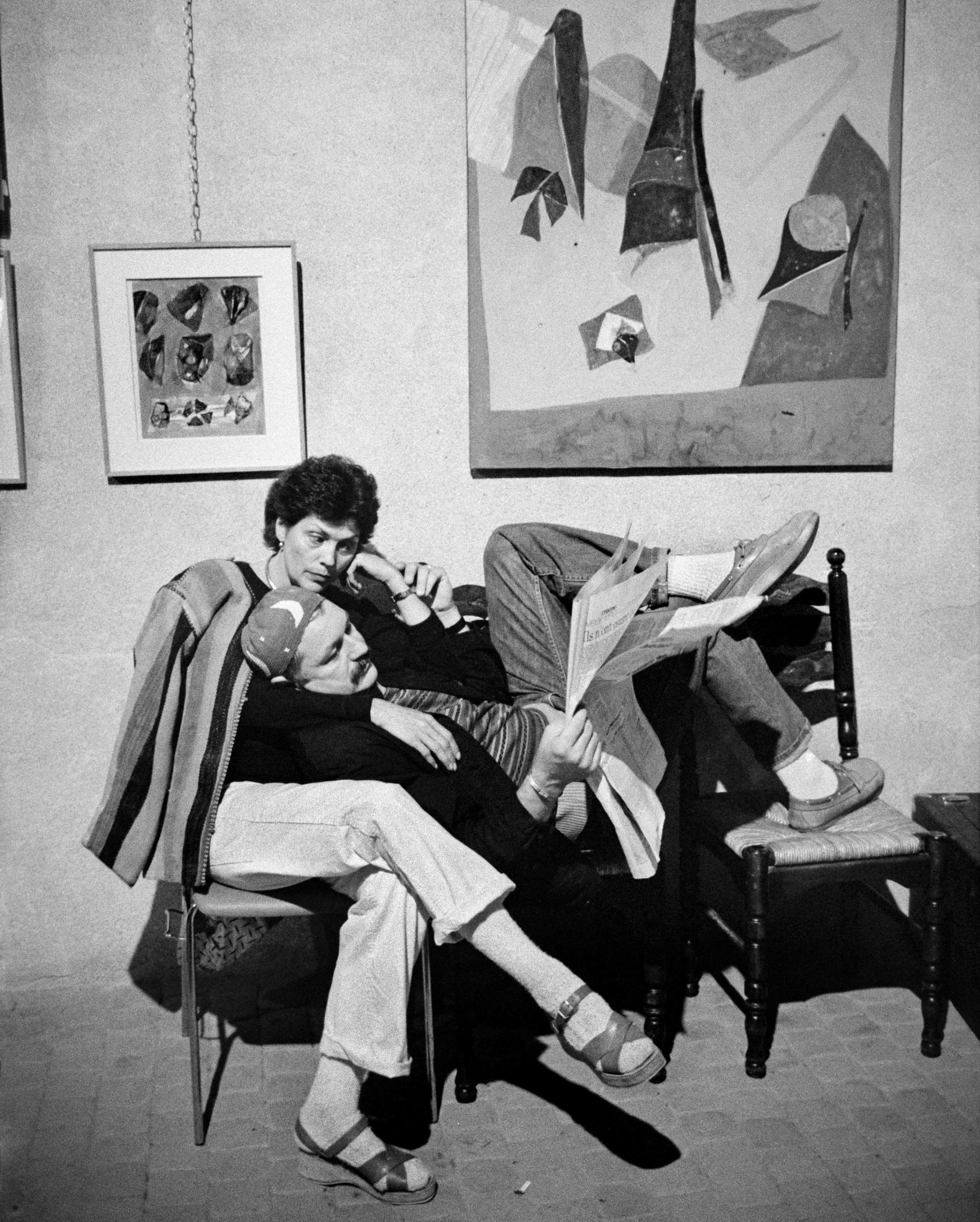
Guy Le Querrec — Photography
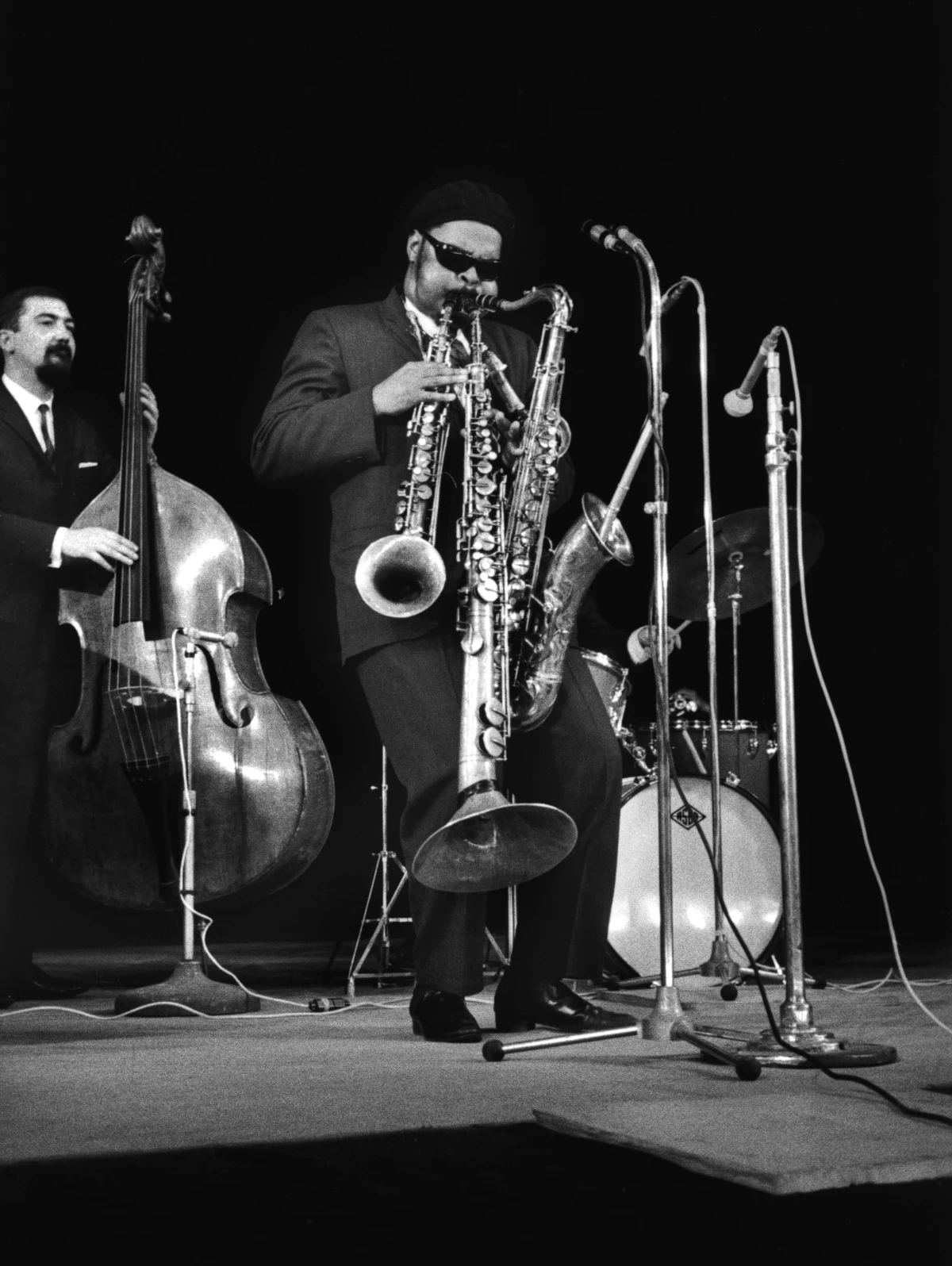
Guy Le Querrec — Photography

Guy Le Querrec — Photography

Labyrinth
When I arrived at Château Palmer in 2004, the year of a very fine vintage, I discovered the myriad facets of this profession as it is practiced at a prestigious estate – the managing of multiple teams, cultivating of relationships with partners, overseeing of finances, marketing and, of course, viticulture... It quickly became clear that my job would always consist of constantly moving from one realm to another, of roaming the meanders of a multifarious world.
It was in July of that year, during a visit to the vineyard alongside the technical director at the time, that I first beheld the 120 plots that make up the estate, an incredible patchwork of quadrilaterals invisible to the naked eye, a new labyrinth that I would have to master. And so began a journey not only through space but time, for it was by looking deep into history that I began to comprehend the origin and identity of each plot in the present.
Little did I know that the most mysterious networks, and the most fascinating secrets, were hidden deep beneath these plots: those of the root system that each vine plant develops, a marvellous web of seeking heads that make their way through the gravel in search of water and food. For a long time, our conception of the grapevine was limited to its upper half, as if only that which “we can see” were worthy of consideration. Today, in the laboratory of Château Palmer, we are discovering a new universe, that of the root microbiota, populated by countless living beings, including hundreds of species of fungi and nourishing bacteria that we now strive to preserve and fortify...
But let us return to the human realm. From Homer to Stanley Kubrick, writers and artists have always imagined labyrinthine forms. Engineers, too. Having one of Ariadne’s threads would be a welcome godsend for anyone braving the maze of the Tokyo underground. Oenophiles have their labyrinths as well. Robert Vifian, the owner of Tan-Dinh, an uncommon Vietnamese restaurant in the heart of Paris, must trace his way through one each time he descends into his marvellous cellar to unearth a rare bottle. In the same spirit of exploration and discovery, this new issue of L’Œil has been conceived as an invitation to indulge in the delight of getting lost.
— Thomas Duroux
- Terminus Palmer — Photographs by Yann Rabanier
- The Wisdom of Ariadne — Illustrations by Sébastien Plassard
- Lost in Translation
- Underground Symphony
- Heavenly Vault — Photographs by Olivier Metzger
This issue is no longer available.

Yann Rabanier — Oriane

Yann Rabanier — Nicolas

Olivier Metzger — Vigne
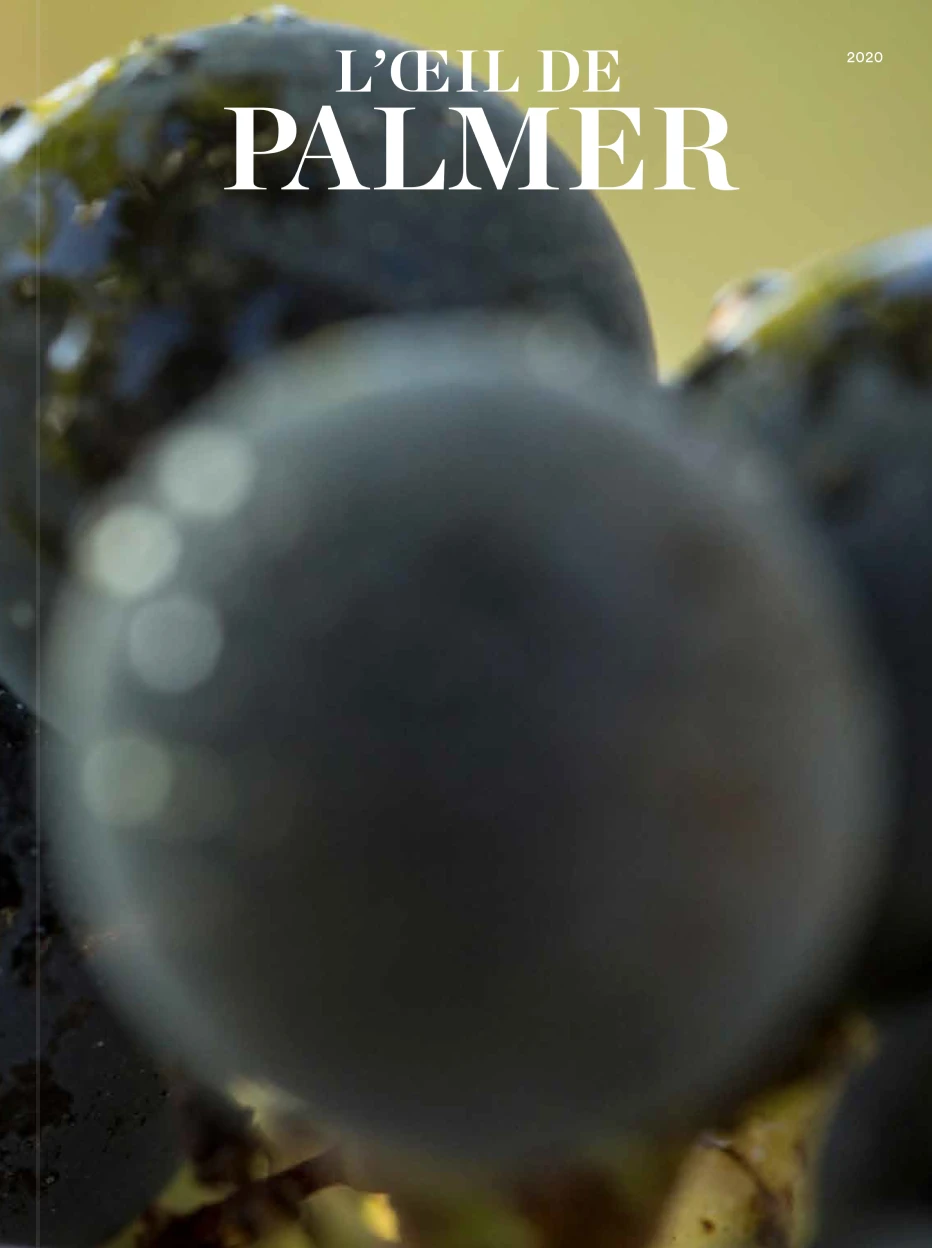
The circle
Bunches in abundance, sublime grapes... 2019 will long be remembered for its divine harvest. Though let us not forget that at times it was an odyssey resembling that of Dante Alighieri, traversing several circles of meteorological hell before reaching this heavenly sphere. For the last seven centuries, The Divine Comedy has taught that from the depths of despair we emerge reborn. The difficulties of the last vintage are now forgotten. And why not: the soil of Château Palmer is certainly in good health. Deep reflection and a long journey have brought the vineyard into balance. Today, the virtuous cycle of “homemade compost” sustains the fertility of an exceptional terroir. However, as much as the entire Palmer team shares the love of a job well done, they know full well that this exceptional harvest is not the fruit of their work alone. Telluric forces were surely at work as well, the planets were aligned… the ancient Greeks would say that their three goddesses of the moon – Selene the luminous, Hecate the tenebrous and Artemis the fertile – worked side by side, night after night, to ensure that each morning the forces of life were replenished anew. And now, from this harvest will be born a wine equal to its fruit. For thousands of years, the magic of fermentation was also attributed to deities. Could they be responsible for this year’s ever so promising vintage?
For this issue, L’Œil de Palmer was keen to penetrate all of these mysteries – the moon, yeast, the cycle of compost, and the circles from which we must escape if we are to reach the light. “I’m not concerned with the spectacular, but rather the meditative,” the photographer/visual artist George Rousse tells us. Could any words better encapsulate the spirit of Château Palmer?
- The essence of the Earth — Photographs by Victor Matussière
- In the Eye of Georges Rousse
- Bright Side of the Moon
- To the Bottom of the Abyss — Illustrations by Élodie Bouédec
- Microcosmos: Denizens of the Must
This issue is no longer available.
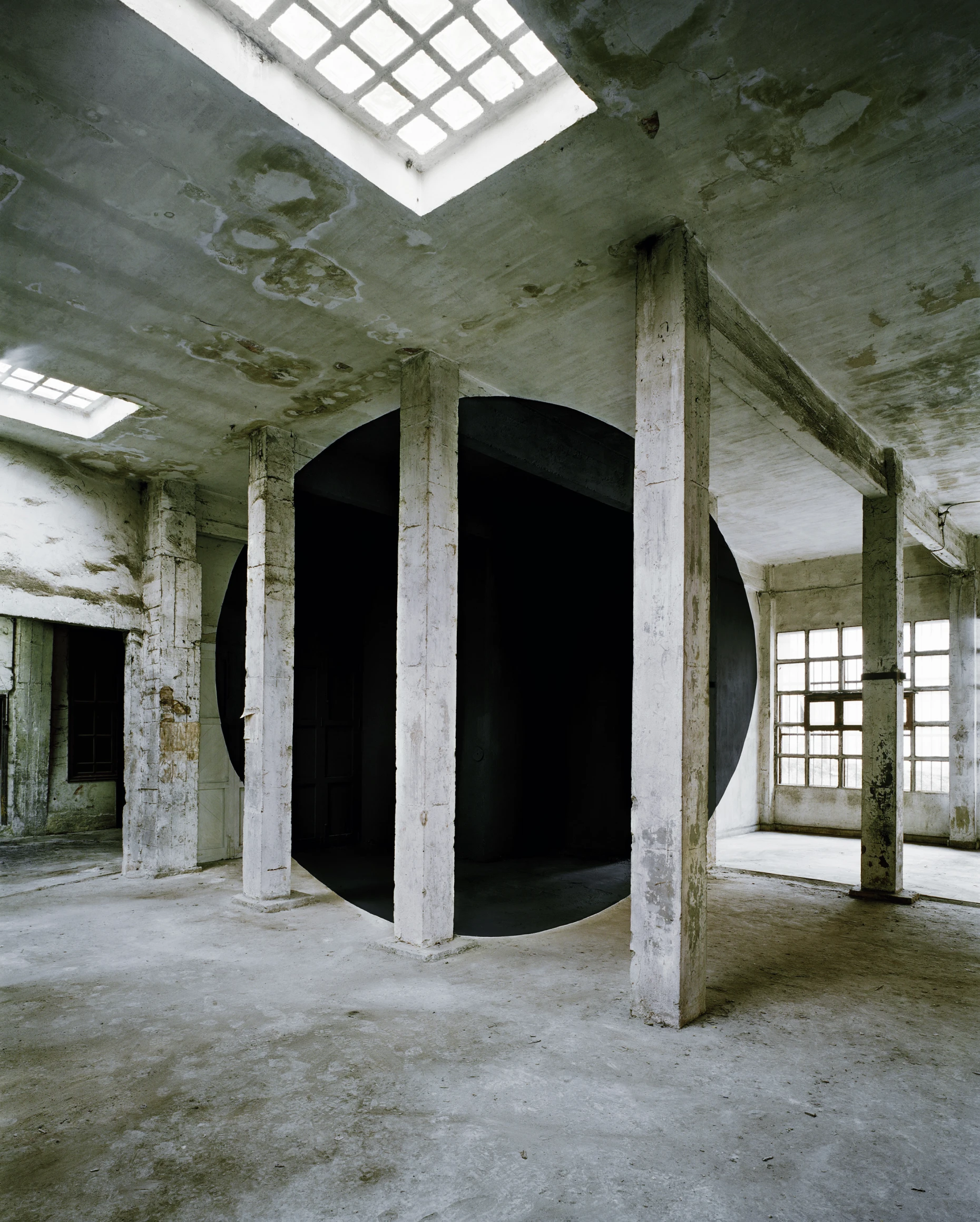
Georges Rousse — Santander 2006

Georges Rousse — Guise 2015 8
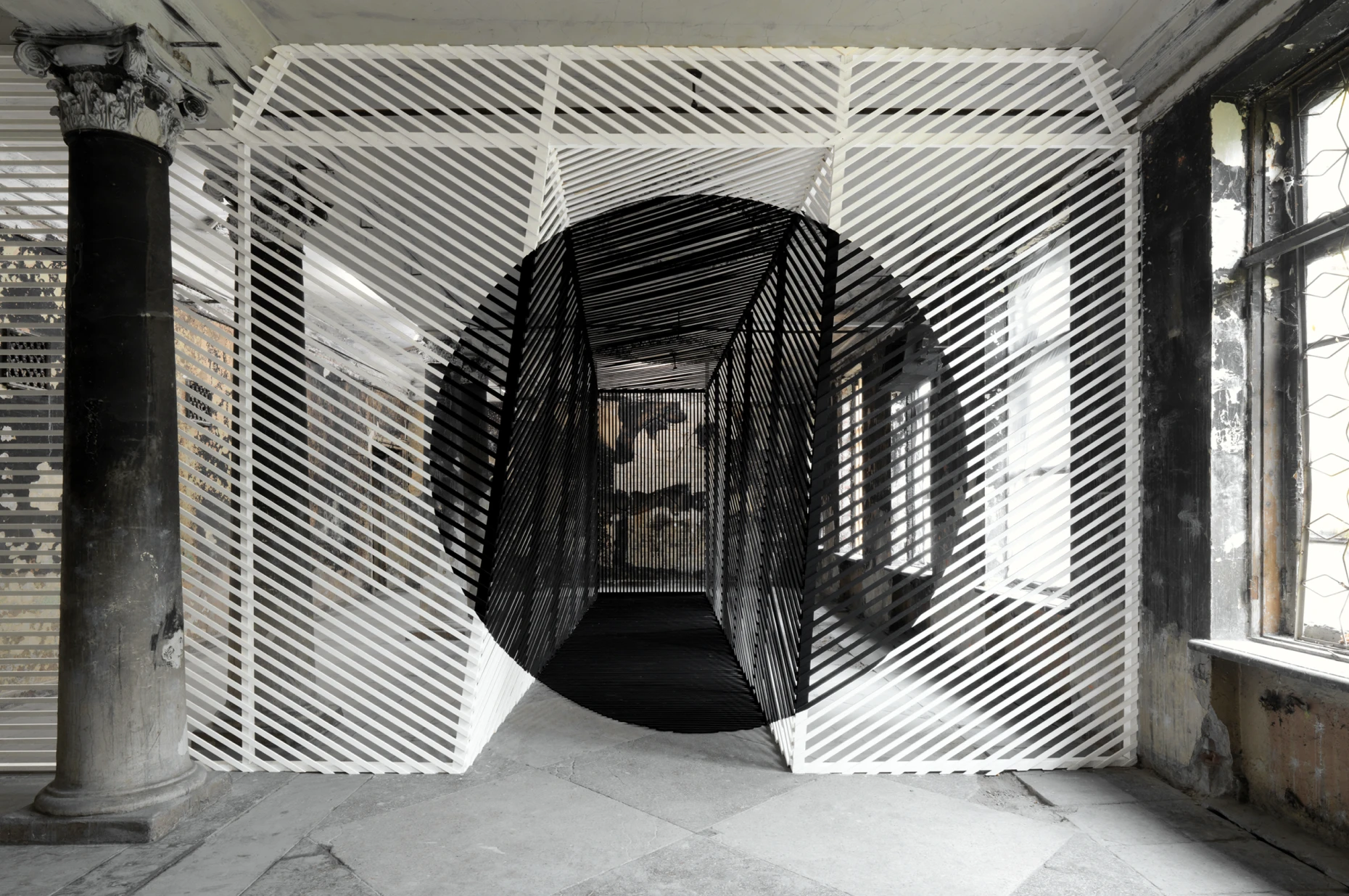
Georges Rousse — Vilnius 2009 2

Jazz
It’s been ten years since jazz burst onto the scene at Château Palmer. Ten years since that day in March 2010 when the Franco-American pianist Jacky Terrasson came to the estate and improvised an intimate concert, drawing his inspiration from the vintage. Ever since, the miracle has been repeated every year by some of the greatest musicians of our time. Each occasion has further reinforced our intuition that jazz and the wine of Château Palmer share a common nature: in the freedom of harmonies, the energy of contrasts, the vitality of rhythm. Today, we celebrate this fruitful alliance with ten portraits by the legendary photographer Guy Le Querrec, whose eye bore witness to a half-century of jazz history.
“Life is a lot like jazz”, wrote George Gershwin. And what symbolises life better than wine? Wine, whose mysterious alchemy depends so much on the interventions of men and women – on their intuition, on their creativity… This capacity, unique to humankind, has become the speciality of the American neuroscientist and musician Charles Limb, who unveiled its circuits in our cortex by studying the cerebral activity of jazzmen in the act of improvisation. Human beings, he enthuses, channel their imagination in music, of course, but also in art, literature, cuisine and wine.
Creativity transcends borders; we are reminded of this by the extraordinary history of jazz, born in the United States from blues and gospel, and which only saw its African-American inventors fully recognised once they’d crossed the Atlantic in 1918, won the trench war alongside the French, and gone on to conquer the clubs of Saint-Germain-des-Prés thirty years later.In every first meeting between people, an old score is reinterpreted anew. Welcoming distributors, sommeliers, aficionados and aesthetes from around the world to the Château each day, Emma and Mélodie, the two young women who orchestrate visits here, bring each and every one on a voyage of the senses, through the magic of the estate.Certainly there could be no music more extraordinary… bats, emitters of complex nocturnal ultrasounds and precious allies of the winegrower. At Château Palmer we work to ensure their preservation, like that of the dozens of bird species observed on the estate. After all, what sweeter jazz could there be than the sound of biodiversity?
- A Vintage Image — Photographs by Guy Le Querrec
- Songs of Welcome — Photographs by Paul Rousteau
- Red is the colour of improvisation
- Fly by Day, Fly by Night
- When Paris counted Jazzmen in its Ranks — Illustrations by Thomas Baas
This issue is no longer available.

Paul Rousteau — Photography

Paul Rousteau — Photography

Guy Le Querrec — 1982

Wordplay
Upon first glance, the Château Palmer estate appears to be a work of absolute harmony, unity, simplicity. But it’s also something more. There’s a tension that makes it live, grow, transcend. A tension between rules and freedom, tradition and innovation, the real and the imagined. And so it was decided that the fourth edition of L'Œil de Palmer would be created under the auspices of the Surrealists, whose word games so compellingly reshaped reality. Indeed, the whole Château Palmer team took part in the literary game known as “Exquisite Corpses”, conceived by André Breton and his companions nearly a century ago. And, as if by magic, a “vision” emerged, both fantastical and joyous, of our good estate.
That same spirit seems to have animated those who, across the ages, named the vine parcels of Château Palmer with the creativity and earthy warmth of the ancient Gascon dialect. Names that “express” the estate, reveal the depth of its history, and contribute to its diversity — a diversity which we encounter again in the winery, the cathedral imbued with silence and secrets where Olivier Campadieu officiates. Enamoured by barrels and vats since his childhood, the cellar master of Château Palmer reveals the secrets of the mysterious cross and circle found chalked onto every barrel since time immemorial.
The Château conceals other mysteries, such as several lines of Gothic script inscribed on an attic wall by a German soldier. An unexpected trace of the past, one which doubtless would have intrigued Leo Marks, poet and one of Britain’s grand masters of cryptography, who ensured the security of coded messages sent by the Resistance in Nazi Europe during the war. Other messages traversed the oceans as well: from its first beginnings in Philadelphia, and its growth in New York, street art has gone on to conquer the walls of Europe’s capitals. Likewise, in the proud city of Bordeaux — today renovated, enhanced with new port districts that extend the city’s beauty along the river, past the “Quai des Chartrons” and beyond — the walls offer surprises aplenty…
- The Alchemist of the Winery — Photographs by Julien Magre
- On the Memory of Parcels
- The Day that we “scarified the Gerbaude” — Illustrations by Jean Jullien
- Tinker, Tailor, Soldier, Poet
- Black, blue, yellow… Bordeaux ! — Photographs by Alice Jauneau
This issue is no longer available.

Jean Jullien — The animals avoid the loopy barrel maker.

Jean Jullien — The sheep relax, perched on a vine.

Jean Jullien — The little kitty Muscat leaps over the Gironde estuary.

The Garden
It’s the story of a metamorphosis. Those who visited Château Palmer at the turn of the twenty-first century find it somehow magnified today. Always noble, the estate has grown in poetry. For nature has returned, but a nature both composed and artful: a garden! It is made up of depths and reliefs, plays on colour and volume, and myriad species blended into an inspired coalescence of life. It’s the young gardener Vincent Le Falher, pruning shears at the ready, who sculpts its contours daily. Where the garden ends, the vineyards stretch into the distance. Yet when vines are cultivated with wisdom, they too can become a garden, says the brilliant landscape architect Gilles Clément, who paid us a visit one day in the summer of 2016. This “planetary garden” so dear to him, these wild places which constitute the great reservoir of biodiversity – Gilles Clément found them there, just at the edge of the vineyard, in the meadows and woodland borders. The Château Palmer team, he says, has understood how much these fringes matter, as does the need to preserve them and diversify them further, to bring as much life – plant and animal – as possible into this grapevine monoculture.
A garden should be “beautiful and useful”, said the Irish botanist William Robinson at the end of the nineteenth century, in the wake of the Arts and Crafts movement. Such is the garden he created in Sussex at Gravetye Manor, with its exquisite beds of herbaceous perennials, its kitchen garden and orchard. A century earlier, that same love of life in all its forms, that same appetite for discovery, animated Thomas Jefferson. Throughout his life, America’s third president was also a gardener. “The greatest service which can be rendered any country is to add a useful plant to its culture,” he wrote from his hilltop estate of Monticello, his grand laboratory of plant diversity. A man of taste, who in France had discovered the refined flavours of Côtes du Rhône and Bordeaux, Thomas Jefferson transplanted twenty-four grape varietals into his garden, in the hope of spreading across his country the love of wine…
- Meeting Gilles Clément — Photographs by Joan Bracco
- Gravetye Manor, inventing the natural — Photographs by Ben Blossom
- Vincent, the Château Gardener — Photographs by Yann Rabanier
- Monticello, a Garden upon a Hill
- Octavio’s Garden — Illustrations by Laurent Fétis
This issue is no longer available.

Joan Bracco — Biodynamie
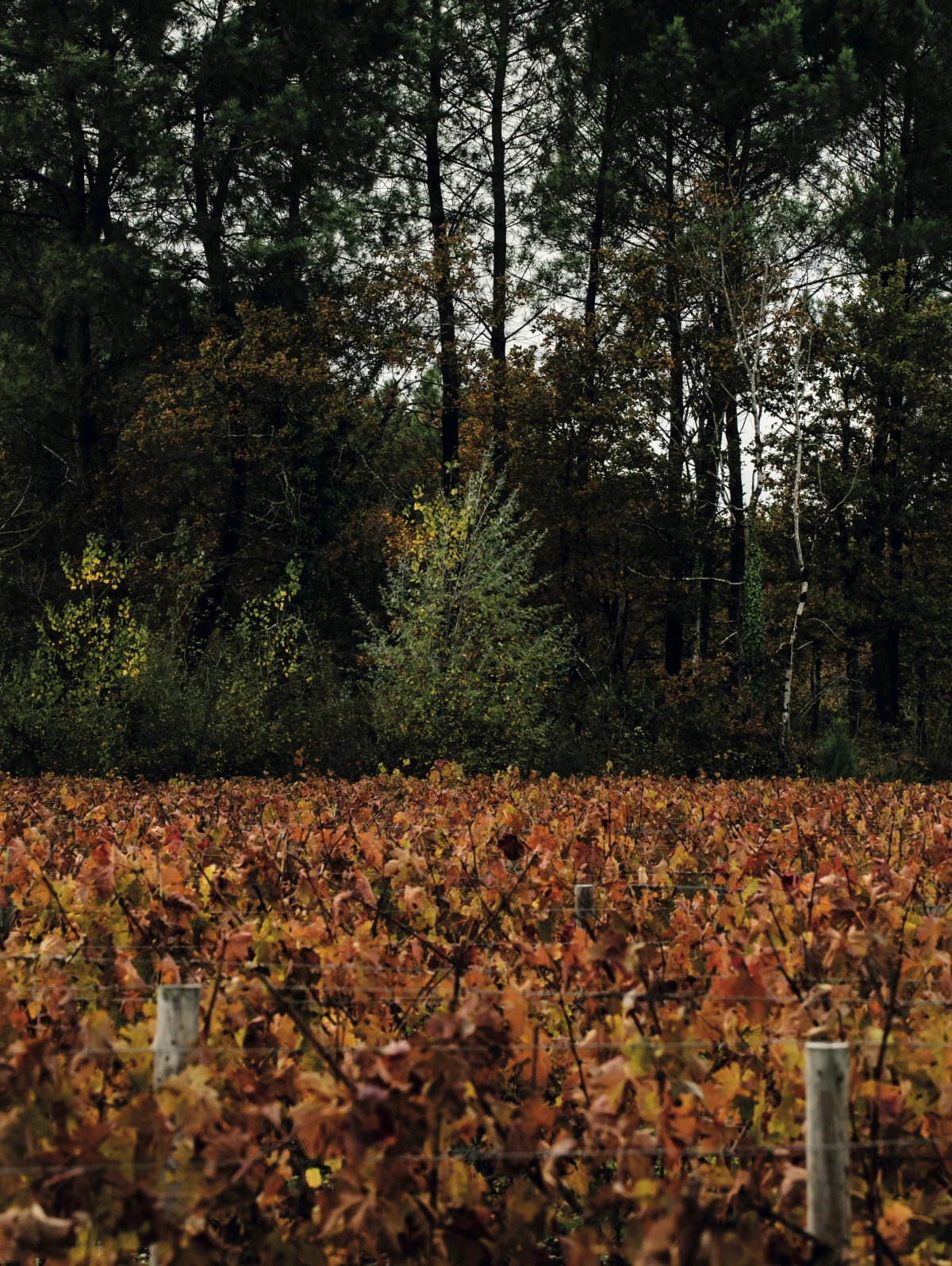
Charles Delcourt — Biodynamie

Yann Rabanier — Jardinier palmer vaches
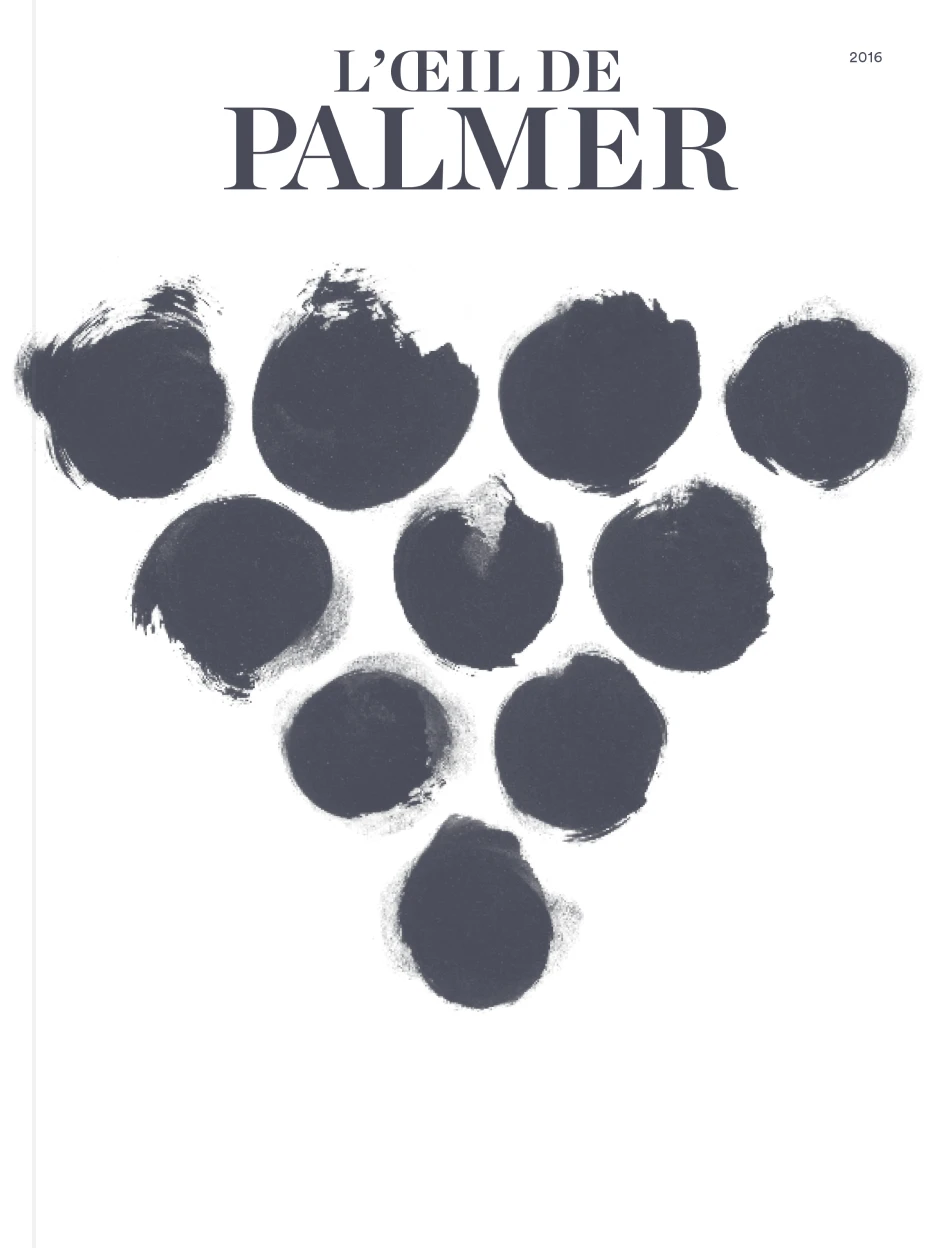
Palmer L'Instant
The eye of our modern times, bearing witness to life’s minutiae and history’s unfolding alike, must certainly be that of the photographer. Henri Cartier-Bresson once described photography as “the watchful eye, ceaselessly spinning, on the lookout, ever ready”. However, as he wrote in his 1952 book The Decisive Moment, true composition – when the arrangement of the parts in a picture suddenly transforms image into art – “can only ever be done intuitively, because we are dealing with fleeting moments”.
More than sixty years later, Sebastião Salgado couldn’t agree more. At the invitation of Château Palmer, the iconic Brazilian photographer revisited the most decisive moments of his career. Speaking about his favourite photograph, that of a hand in the Serra Pelada gold mine, he says, “it’s a hundredth of a second, when everything materializes in front of my eyes, the composition, the light”.
A hundredth of a second… In the heart of winter, every clip of the pruning shears is a decisive moment for the vigneron which will determine the lifespan of the vine, and the quality not only of the next harvest but that of years to come. Of all the small actions that prelude the birth of a wine, pruning is the most noble, the most precious. And to pause and simply contemplate the hand of the pruner in action proves a remarkably illuminating experience indeed.
Just a “rôtisseur in Paris” (as this food writer / restaurateur likes to call himself today), Bruno Verjus tells us about his commitment to living in the moment, and also about the restraint he believes to be indispensable in cuisine “to allow the magnificent products to reveal their essence”. Hearing about the chef’s respect for nature and his conscious gestures in the kitchen, a kinship becomes evident between the credo of Verjus and the convictions that inspire us at Château Palmer. “If the movement is not true and harmonious from the very beginning, it cannot be good,” he says.
The passion Bruno Verjus holds for Jean Giono’s short story “The Man Who Planted Trees” is realized in the life of Sebastião Salgado, who in recent years has tenaciously worked to reforest the devastated lands he knew as child. In so doing, he has regreened Brazil’s Mata Atlantica forest. “The animals are returning,” the great photographer rejoices – jaguars, caimans, but also butterflies and birds.
When lived in such ways, when so completely embraced and when coupled with such genuine longing for harmony, the moment becomes something greater than a measure of time: a vocation.
- The Pruner’s Promise — Photographs by Nicolas Joubard
- “I want to bring landscapes to the diner” — Photographs by Yann Kebbi
- The Château Regulator — Photographs by Olivier Metzger
- Salgado’s Passion — Photographs by Sebastião Salgado
- Other Moments in Time
This issue is no longer available.

Olivier Metzger — Michel Nebra

Olivier Metzger — Bunch of grapes

Nicolas Joubard — Secateurs

Palmer Blue
In the beginning there is the eye. The origin of all potential life, it bursts forth from a simple branch. The source of vine shoots, leaves and fruit, for a wine grower this tiny dormant bud is the crux of everything. He can distinguish a terminal eye from an axillary, stipulary, adventitious or latent eye. He will éborgner or disbud, extirpating useless eyes. He prunes the shoots down to one eye, two eyes, or three.
For the men and women of the vine, their world is in the eye. Indeed, every day it is the central preoccupation of our entire team at Château Palmer. We are launching this annual magazine, L'Œil de Palmer — The Eye of Palmer, certainly in part to bear witness to this ever-renewing miracle of life, to this beauteous fruit which ripens in the heart of summer, and to the work of all those who endeavour to ensure that, season after season, it’s as close to perfect as could possibly be.
But “the eye of Palmer” is also . . . our own. And it will be, we hope, yours too — a shared vision, a collective adventure: encounters, profiles, stories, born from a single theme chosen anew each year.
For our 2015 vintage, the magazine will be themed “Blue”. Palmer Blue emerged during the Second Empire of Napoleon III, with the arrival of the Pereire brothers on the soil of Médoc; such is the story of the label of Château Palmer, a positively singular label, instantly recognizable, which some mistakenly assume to be black, so completely does its “midnight-blue” meld with the bottle in its staggering opacity.
Blue is also the colour of the grape, a colour it only attains at the end of its cycle in the final days of ripening, thanks to its abundant — and quite appropriately named — anthocyanin pigments (from the Greek anthos and kyanos, or dark blue). Blue is also the vast, deep oceanic floor, which awaits us just off the tip of the Médoc peninsula; blue is the blue note of jazz, an inherent element of this music which colours the twilight at Palmer several evenings every year; yes, blue is the hue of a great many of our favourite things around the globe.
- The Mystery of the Blue Label — Photographs by Lucien Lung
- Jacques Dupin, the Education of a Winegrower — Photographs by Antoine de Tapol
- A Color From Heaven — Photographs by Jacques Mataly
- Ocean Roots — Illustrations by Agnès Decourchelle
This issue is no longer available.

Lucien Lung — Yves Chardon
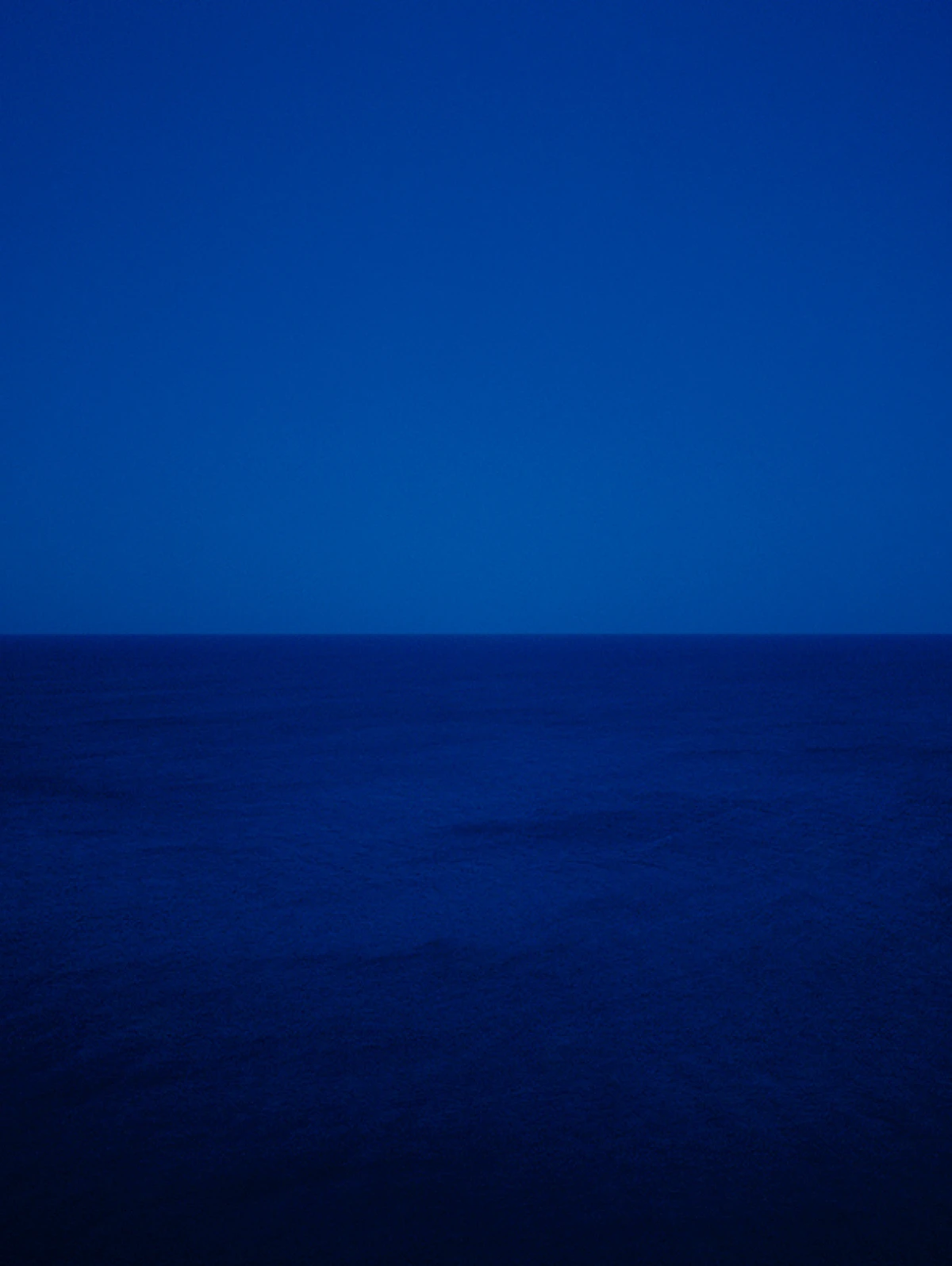
Jacques Mataly — Blue

Antoine De Tapol — Byodinamy
In the beginning is the eye. The origin of all potential life…

Charles delcourt — Photography
Since 2015, L’Œil de Palmer has been watching seeds grow below ground and in curious minds, challenging its strengths and inventing a whole field of expression in which shapes, patterns and passions (whether circles, labyrinths, or infinity itself) echo one another in a thrilling symphony. The foundations are solid; the roots already deep. Today, everyone knows that Château Palmer enthusiastically celebrates photography and the vine, jazz and the written word.
2025 inaugurates a second editorial season, which has taken on the task of using the next ten years to expand the palette and vision of our world. From now on, our perspective will stretch even further, observing the shifts and changes that excite and stimulate the mind. L’Œil is growing, embracing paths less travelled. From the Gironde estuary to the other end of the Seven Seas, it will archive the astonishing and the resonant, mapping out unique projects and new shores. More than ever, photography will be in pride of place – you can’t have L’Œil without “vision” – driven by figures and styles combining and blending to transmute the world into sensitive, poetic, offbeat narratives.
Is this a work of art? Perhaps. An adventure? Certainly. The free exploration of roads that intrigue, move and inspire us.

Charles delcourt — Photography

Charles delcourt — Photography

Charles delcourt — Photography
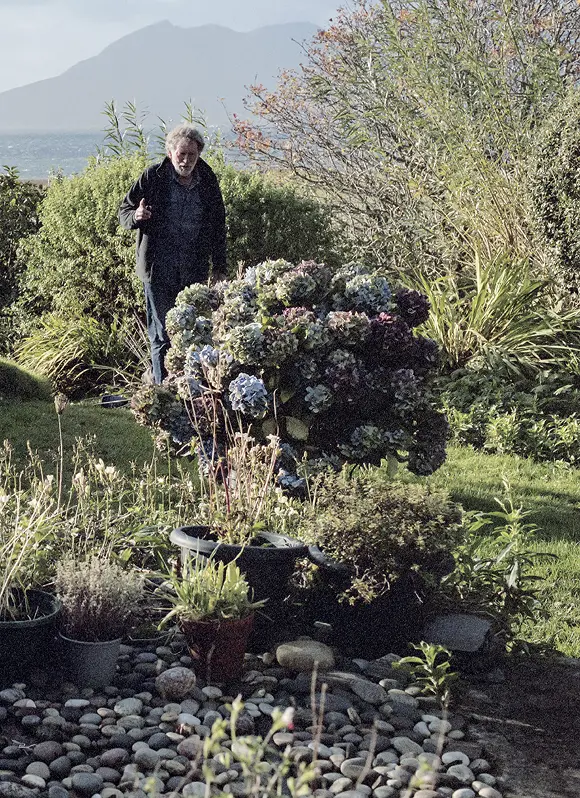
Charles delcourt — Photography

Charles delcourt — Photographie

Charles delcourt — Photographie



